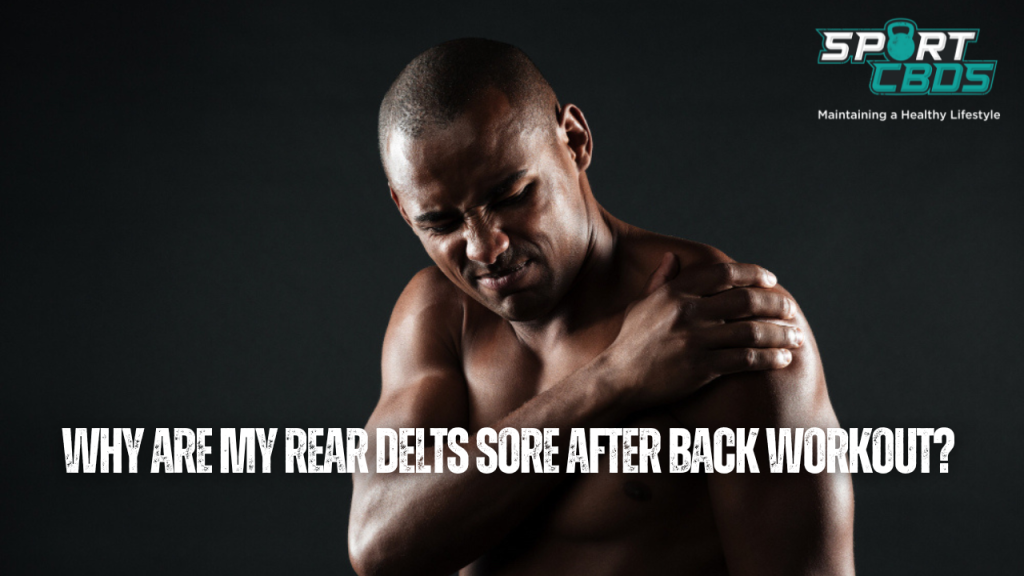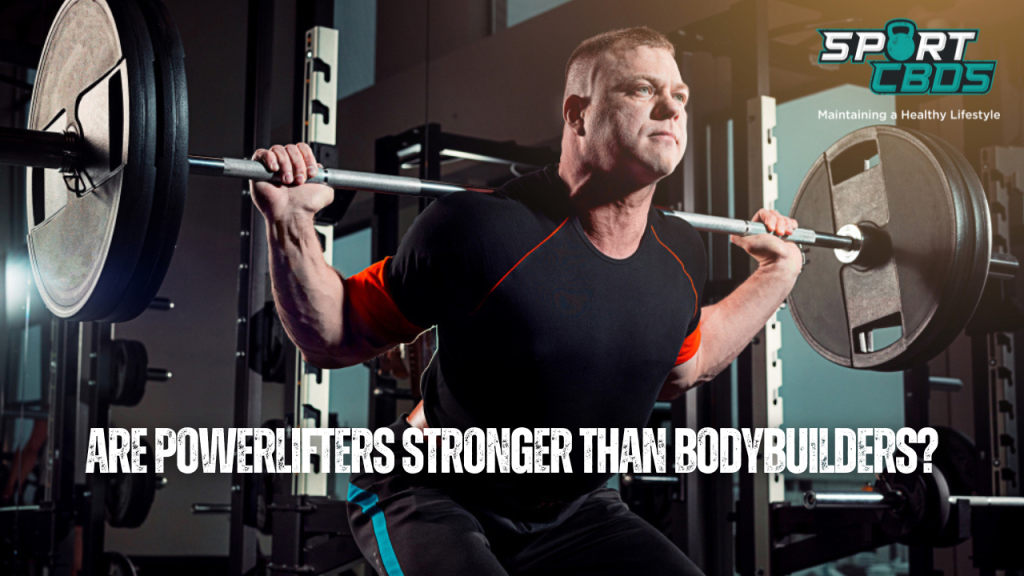
Why Are My Rear Delts Sore After Back Workout? (Causes, Prevention And Treatment)
Experiencing soreness in the rear deltoids after a back workout is a common issue among fitness enthusiasts.
This article aims to provide insights into why this happens, how to prevent it, and what steps to take if you’re already dealing with sore rear deltoids.
Understanding the anatomy of the rear deltoids and how they function during back workouts is crucial in preventing soreness and achieving your fitness goals.
Why Are My Rear Delts Sore After Back Workout?
The rear deltoids, located at the back of the shoulders, are actively engaged during back workouts, especially in exercises involving pulling motions. Soreness in the rear deltoids can be attributed to several factors including overuse, incorrect form and technique, underdeveloped muscles, and lack of proper warm-up or cool-down. Overuse and strain from lifting heavy weights or performing excessive repetitions can cause muscle fatigue. Incorrect form can place undue stress on the rear deltoids, and underdeveloped muscles may lead to an imbalance where the rear deltoids are overworked. Additionally, skipping warm-ups and cool-downs can leave the muscles unprepared for the intensity of the workout. To prevent and alleviate soreness, it’s essential to employ proper form, engage in a balanced workout routine, and allow for adequate rest and recovery. Cold and heat therapy, as well as gentle stretching, can also be beneficial in treating soreness. If the pain is severe or persistent, consulting a healthcare professional is advisable.
Understanding the Rear Deltoids
Anatomy and Function of the Rear Deltoids
The deltoid muscle is divided into three parts: the anterior (front), lateral (side), and posterior (rear) deltoids. The rear deltoids, or posterior deltoids, are located at the back of the shoulder. They play a vital role in shoulder movements, especially when it comes to rotating the arms and bringing them back from the front.
The rear deltoids are often involved in exercises that require pulling motions, such as rows and pull-ups.
Role of Rear Deltoids in Back Workouts
In back workouts, the rear deltoids are actively engaged. Exercises like bent-over rows, face pulls, and reverse flys specifically target the rear deltoids. These muscles work in tandem with other back muscles to stabilize the shoulder joint and allow for a range of movements.
However, the rear deltoids are relatively small muscles and can easily be overworked, especially if the larger back muscles are not effectively engaged. This over-reliance on the rear deltoids can lead to muscle soreness after a workout.
It is essential to have a balanced workout routine that adequately targets all the muscles involved. This includes not only focusing on the larger muscles of the back but also giving attention to the smaller stabilizing muscles like the rear deltoids.
Proper form is crucial in ensuring that the muscles are worked effectively without undue strain.
Understanding the Shoulder Anatomy further can help in knowing how to engage the rear deltoids properly. Additionally, being aware of the common causes of muscle strain, as explained by the Mayo Clinic, can be beneficial in preventing soreness.
Stay tuned as we delve into the common causes of rear delt soreness after back workouts and explore preventive measures and treatments.
Common Causes of Rear Delt Soreness After Back Workout
There are several factors that can contribute to soreness in the rear deltoids after a back workout. Being aware of these factors is the first step in preventing and managing the soreness effectively.
Overuse and Strain
Overuse of the rear deltoids during intense or prolonged workouts can lead to muscle strain. This is especially common if you are lifting weights that are too heavy for your current strength levels or if you are performing a high number of repetitions without adequate rest.
Incorrect Form and Technique
Using incorrect form and technique during exercises not only reduces the effectiveness of the workout but also puts unnecessary strain on the muscles. For example, rounding the back during rows or using too much momentum can cause the rear deltoids to take on more load than they should.
Underdeveloped Rear Deltoids
If the rear deltoids are underdeveloped compared to other muscles, they may become fatigued more quickly. This imbalance can cause the rear deltoids to be overworked as they try to compensate for other muscles.
Lack of Warm-up or Cool-down
Skipping the warm-up before exercising or not cooling down properly afterwards can cause muscle soreness. Warm-ups prepare the muscles for the workout, and cool-downs help to gradually reduce the intensity and bring the muscles back to a resting state.
Understanding the common causes of muscle strain, as explained by the Mayo Clinic, can be beneficial in preventing soreness.
Related: Will Lat Pull-Downs Help With My Pull-Ups?
How to Prevent Rear Delt Soreness
Proper Form and Technique
Ensuring that you are using the correct form and technique is crucial. This includes keeping the back straight during exercises and using controlled movements. If you are unsure of the correct form, consider consulting a fitness trainer.
Adequate Warm-up and Cool-down
- Warm-up: Include light cardio and dynamic stretches to prepare the muscles.
- Cool-down: Include static stretches and light movements to bring the muscles back to a resting state.
Balanced Workout Routine
Ensure that your workout routine is balanced and targets all the muscles evenly. Include exercises that specifically target the rear deltoids, but also work on strengthening other muscles in the back and shoulders.
Regular Rest and Recovery
Allow your muscles to recover by taking rest days and not overtraining. This includes getting enough sleep and considering active recovery days where you engage in light exercise.
By taking these steps, you can work towards preventing rear delt soreness and continue to make progress in your fitness journey without unnecessary setbacks. Remember, listening to your body is key.
Treatment for Sore Rear Delts
If you find yourself dealing with sore rear deltoids despite your best efforts at prevention, there are several steps you can take to alleviate the discomfort and promote healing.
Rest and Recovery
Giving your muscles time to heal is crucial. This might mean taking a few days off from intense upper body workouts or modifying your routine to avoid straining the rear deltoids.
Cold and Heat Therapy
- Cold Therapy: Applying ice packs to the sore area can help reduce inflammation and numb the pain. Do this for 15-20 minutes every 2-3 hours for the first 48 hours.
- Heat Therapy: After the initial 48 hours, applying heat can help relax and loosen the muscles. Use a warm towel or heating pad for 15-20 minutes at a time.
Stretching and Mobility Exercises
Engage in gentle stretching and mobility exercises to improve blood flow to the muscles and promote healing. Be sure not to overstretch, as this can cause further damage.
When to Seek Professional Help
If the pain is severe, or if it doesn’t improve with rest and home treatment, it might be time to consult a healthcare professional. They can provide a proper diagnosis and recommend a treatment plan.
Related: Why Do I Not Feel Pull Ups in My Back?
FAQs
Why are my shoulders sore after back day?
Shoulders, encompassing the rear deltoids, play a significant role in various back exercises. Soreness in the shoulders post a back workout can be attributed to factors such as incorrect form, overexertion, or skipping warm-up sessions. These factors can strain the muscles, leading to discomfort and soreness.
How do I alleviate soreness in my deltoids?
Give your muscles a break by resting and steering clear of activities that could strain them further. Utilize cold or heat therapy to reduce inflammation and relax the muscles. Engage in mild stretching exercises to enhance blood circulation to the muscles. If the pain is intense, over-the-counter pain relievers can be taken as per the recommended dosage.
What is the typical duration for muscle soreness to last?
Muscle soreness usually starts to diminish between 48 to 72 hours post-exercise. However, if the soreness persists beyond a week, it is prudent to consult a healthcare professional for advice and possible intervention.
Is it advisable to workout while my muscles are still sore?
Engaging in intense workouts targeting the sore muscles is not recommended as it can exacerbate the soreness. Nonetheless, light activities and active recovery exercises can be beneficial in promoting blood flow and aiding the healing process. It’s crucial to listen to your body and avoid pushing through pain.
Final Thoughts…
Rear delt soreness after a back workout is a common issue that can result from overuse, incorrect form, muscle imbalances, or inadequate warm-up and cool-down. Understanding the anatomy of the rear deltoids and their role in back workouts is essential.
By employing proper form, engaging in a balanced workout routine, and allowing for adequate rest and recovery, you can significantly reduce the likelihood of experiencing soreness.
If you do experience soreness, treatments such as cold and heat therapy, stretching, and rest are effective. Always listen to your body and don’t hesitate to seek professional help if the pain is severe or persistent.
Are your rear deltoids sore after a back workout and have these tips helped? Let me know in the comments below.
If you enjoy sport and use CBD to help with your recovery in between gruelling workouts, then you are in the right place. Here at Sport CBDs, we train hard and recover the best way possible…
We have regular workouts (check out the YouTube channel), CBD news and CBD products to help you gain that edge!
If you wanted to check out the reputable CBD we have on offer here at the site, then please head to the Sport CBDs Store (CLICK HERE). We also do fitness clothing and yoga accessories too.
Until next time, all the best…
Lee
Founder – Sport CBDs
Featured Image Attribution – Image by drobotdean on Freepik


